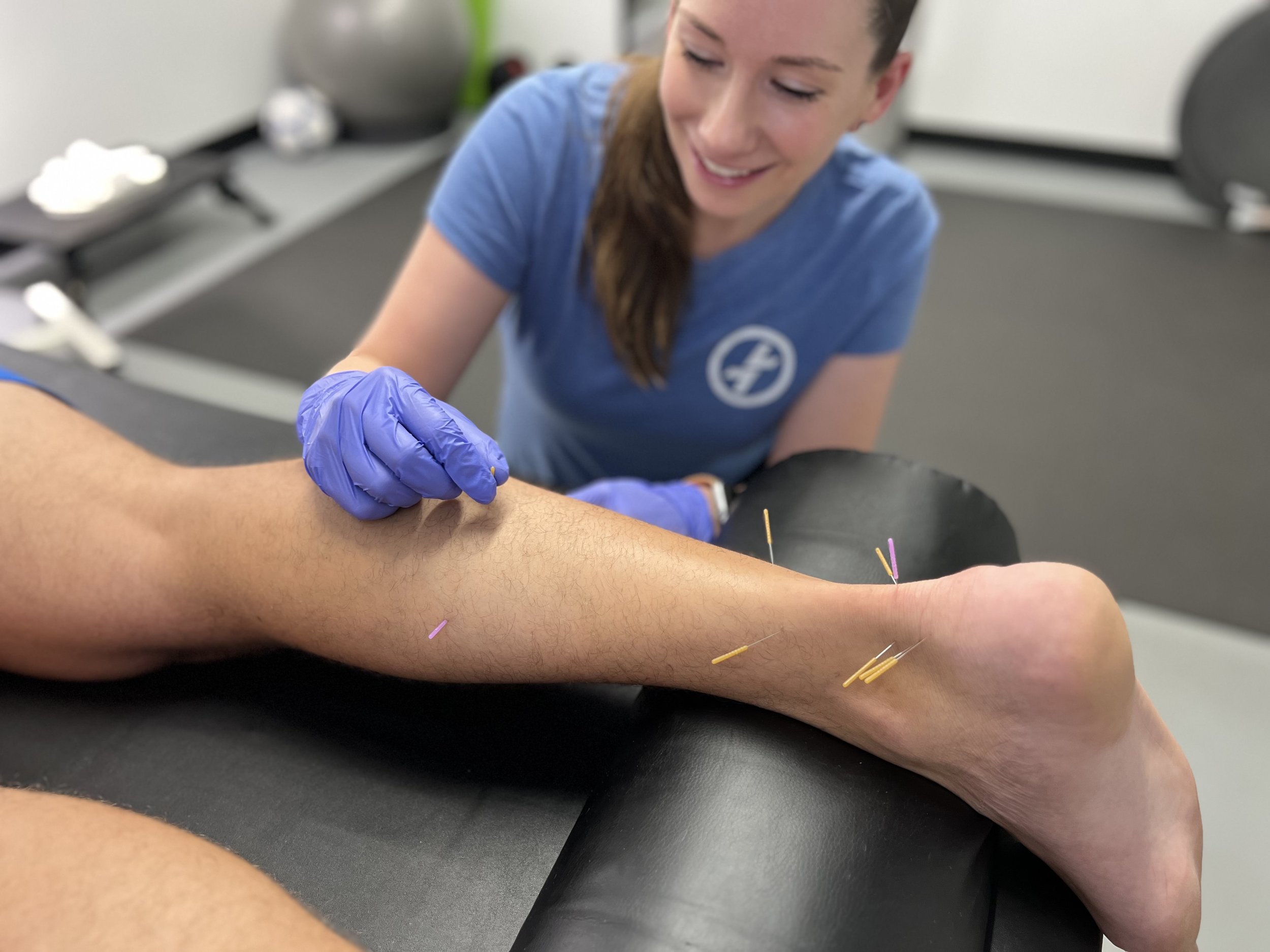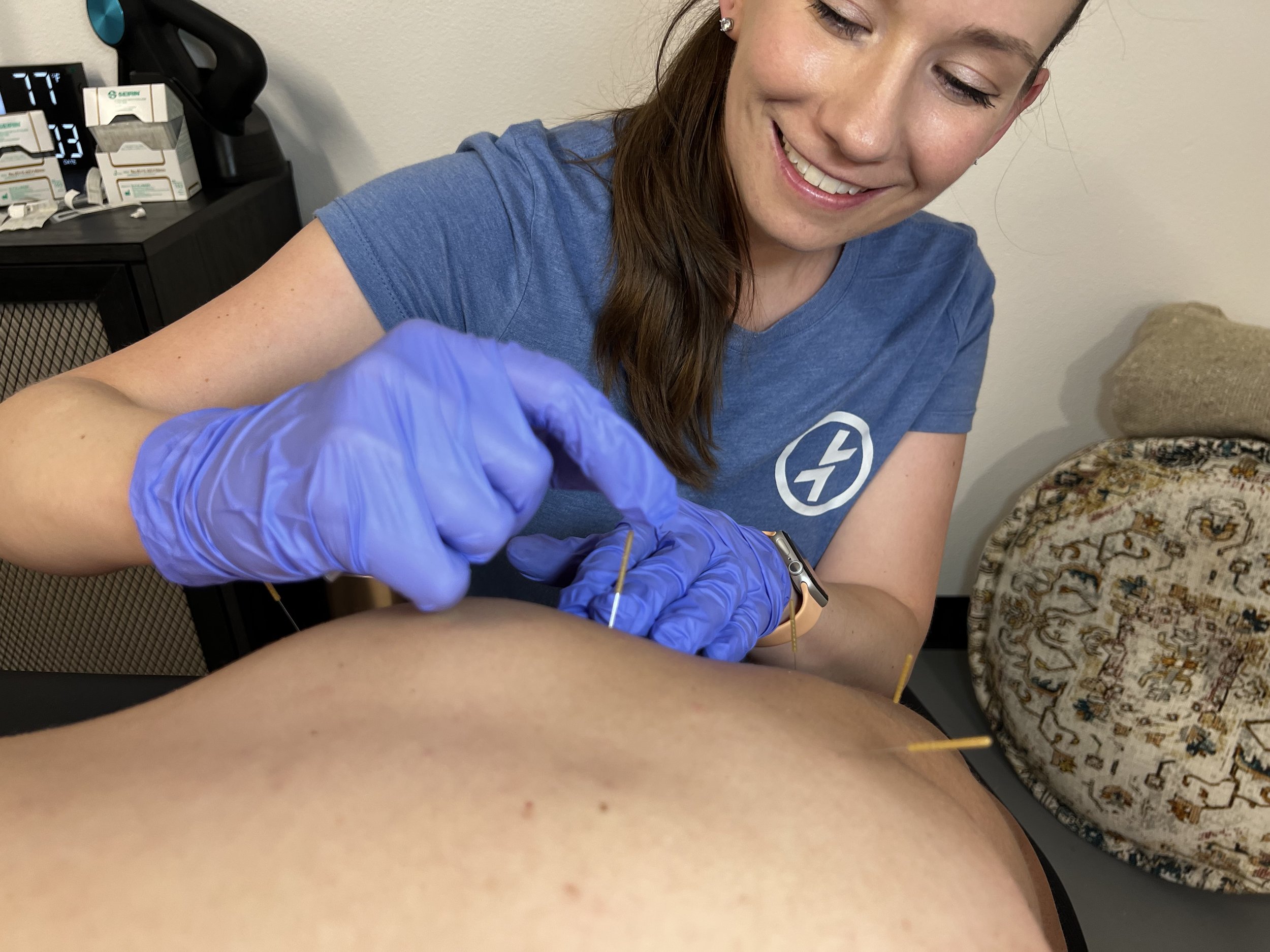
DRY NEEDLING IN KENNEWICK, WA
Intramuscular needling to decrease pain, relieve muscle tension, improve mobility, and stimulate tissue repair
Jumpstart your recovery with dry needling.
I’m thrilled to offer dry needling (aka intramuscular needling) as part of your treatment plan at Game Changer Physical Therapy. Why? Because it’s one of the most effective techniques we can use in physical therapy to help improve mobility and alleviate aches and pains.
Dry Needling uses a thin, sterile, single-use needle to penetrate the skin and directly target the muscles and connective tissue underneath for healing and repair.
My favorite part - it’s a safe, effective way to treat trigger points and manage pain. That translates into spending less time on the sidelines and recovering faster to get you back in the game.
I’m proud to be among the first providers endorsed in Washington state to be able to offer this service after my extensive training and certification through the American Academy of Manipulative Therapy.
Scroll down for answers to your most frequently asked questions about dry needling.
Take your recovery to the next level with dry needling.
Dry needling can be an effective treatment for:
Achilles tendonitis
Plantar fasciitis and foot pain
Ankle sprains
Shin splints
Knee pain and arthritis
Headaches
Tennis elbow (lateral epicondylitis)
Golfer’s elbow (medial epicondylitis)
Carpal tunnel
Adductor strain (groin pull)
Shoulder impingement
Neck pain
Whiplash
TMJ disorders (temporomandibular joint)
Low back pain
Sciatica
Piriformis syndrome
Hip pain
Frequently Asked Questions About Dry Needling (aka Intramuscular Needling)
-
It's a targeted treatment using sterile, single use monofilament needles inserted into specific muscle and connective tissues to decrease pain, stimulate a healing response, and increase tissue mobility.
Intramuscular needling is also known as "dry needling" and pairs well with other physical therapy interventions, such as manual therapy and exercise to achieve best results.
According to RCW.18.74.020, "Dry needling is a skilled intervention that uses a single-use, sterile filiform needle to penetrate the skin and stimulate underlying myofascial trigger points and connective and muscular tissues for the evaluation and management of neuromusculoskeletal pain and movement impairments. Intramuscular needling requires an examination and diagnosis. It does not include needle retention without stimulation or the simulation of auricular (ear) and distal (not local to the area being treated) points."
Dry needling is a skilled physical therapy treatment that should only be performed by a certified provider with an endorsement in Washington state.
-
Dry needling is an effective technique that can help to:
Decrease pain
Improve circulation to targeted tissues for repair
Increase range of motion by promoting muscle and connective tissue relaxation
-
There are a lot of benefits to receiving dry needling treatment, which include:
Pain relief
Increased circulation for tissue healing
Decreased muscle tension
Increased range of motion
It's a low cost, effective treatment option that pairs well with manual therapy and exercise to promote a quicker recovery from injury.
-
Everything has some level of risk involved, so here are the some of the risks associate with dry needling:
Pain during and after treatment
Soreness and bruising
Infection
Bleeding
Adverse reactions (dizziness, faintness, allergic response)
-
Dry needling is paired with other therapy interventions during your treatment for maximum benefit, which typically includes manual therapy (ex. massage, soft tissue mobilizations, joint mobilizations) and exercise for strengthening and proper muscle activation.
We only use single-use, sterile filiform needles (way smaller than the ones used to draw your blood) during treatment. The needle penetrates the skin and stimulates the targeted area (connective tissues, muscles, and myofascial trigger points) for healing.
Every session is truly tailored to you and your needs.
We use anywhere from 2-20 needles depending on your comfort level and what tissues we are targeting. Typically, we start with fewer needles, anywhere from 2 to 8, during the first session.
The needles will remain in place for 20-30 minutes and will be continually adjusted or stimulated throughout the treatment session.
You might be a little sore or feel some tightness in the muscles immediately afterward. You may notice some improvement like decreased pain or increased mobility as soon as the next day.
-
Dry needling targets myofascial trigger points, muscular tissue, and connective tissue specifically.
Physical therapists practicing dry needling are NOT trained in the traditional Chinese medicine practice of acupuncture or moving qi along energy meridians in the body (unless they hold a separate acupuncture license).
Acupuncture is further defined in RCW 18.06.010 as "'Acupuncture and Eastern medicine' means a health care service utilizing acupuncture or Eastern medicine diagnosis and treatment to promote health and treat organic or functional disorders, which includes a variety of traditional and modern acupuncture and Eastern medicine therapeutic treatments, such as the practice of acupuncture techniques and herbal medicine to maintain and promote wellness, prevent, manage, and reduce pain, and treat substance use disorder."
If you are currently working with an acupuncturist or eastern medicine provider, then I will make an effort to coordinate care with that provider to prevent conflict or duplication of services (with your permission, of course).
-
Well, it's called "dry" needling simply because we use thin, monofilament needles and do not inject any substances into the targeted tissues during treatment.
In "wet" needling involves the use of a hollow needle with injectables, like cortisone, PRP, stem cells, or other medication into the area. Read more about this here.
-
No, dry needling doesn't "hurt" but it can be a little uncomfortable at times. And you may experience soreness in the area afterwards.
But here's the deal - we are looking to reproduce some of your symptoms. If you're experiencing pain, then we may reproduce your pain in that same area with dry needling treatment.
You may feel no pain at all, or a radiating ache from the area where the needle is inserted. It typically depends on how sensitive the tissue is that's being treated.
Sometimes we will get a twitch response from the muscle with needle stimulation, which can make you a little more sore for a day or two afterwards.
-
I earned my Certification in Dry Needling (Cert. DN) in December 2023 through the American Academy of Manipulative Therapy.
Courses included:
DN-1: Dry needling for Craniofascial, Cervicothoracic, and UE Conditions: an Evidence-Based Approach
DN-2: Dry Needling for Lumbopelvic & Lower Extremity Conditions: an Evidence-Based Approach
DN-3: Ultrasound-Guided Dry Needling: Diagnosis & Management Implications for Spine & Extremity Musculoskeletal Conditions





